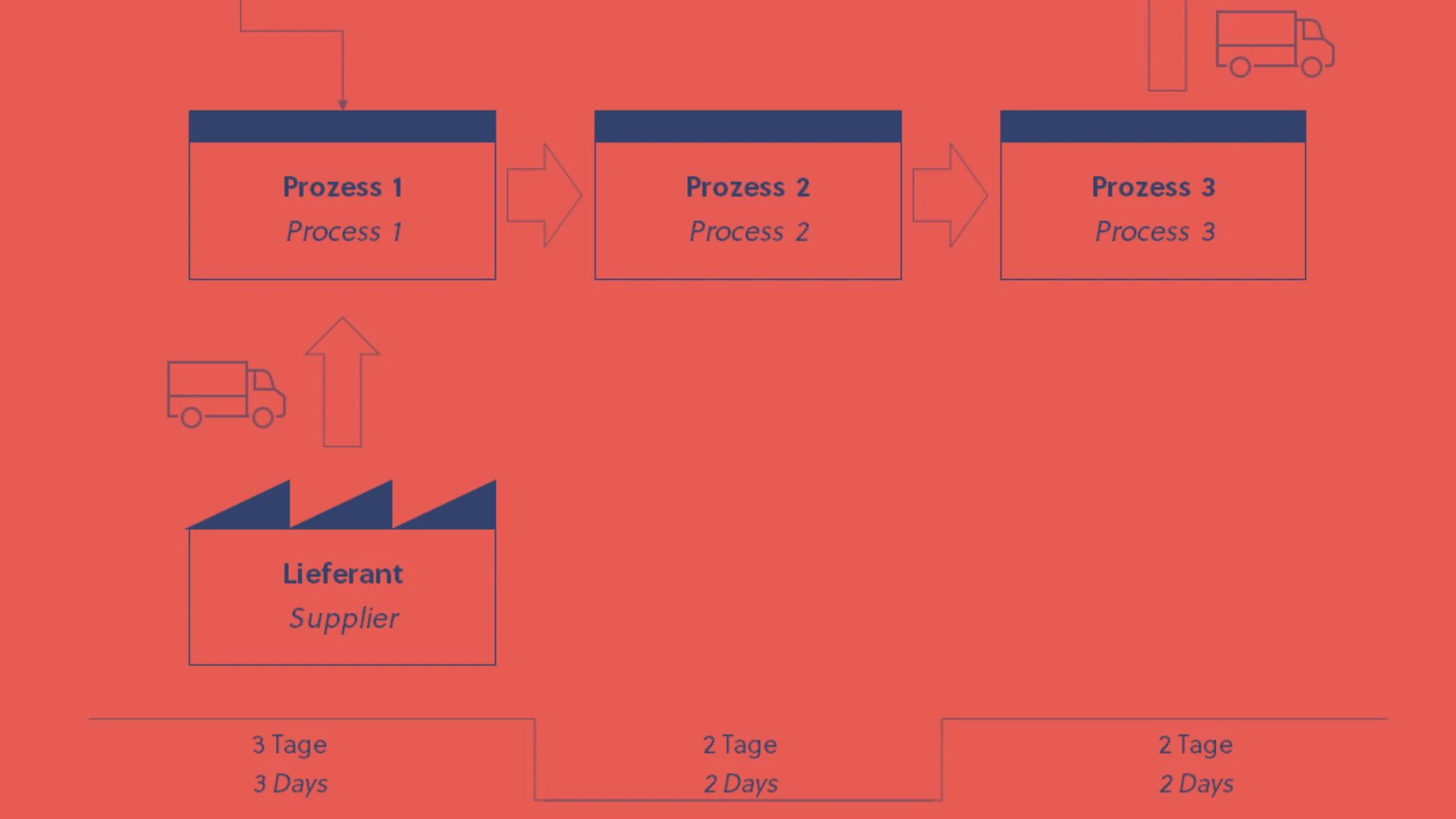What is a Value Stream?

Your author & subject matter expert

Dr. Jochen Schlick
Senior Partner & Co-FounderThe value stream describes the process of "value creation" in a company. The value stream therefore encompasses all activities required to manufacture and offer a product or service. Every company has one or more individual value streams and one overall value stream. Accordingly, value streams represent both material and information flows.
The term value stream originates from business administration and is used in particular in the area of production planning and control for so-called value stream management. The following types of activities are distinguished:
Value-added activities
Value-added activities generate value from the customer's perspective, i.e. they contribute directly to the creation or distribution of the product or service.
Non-value-added activities
These activities do not increase the added value of the product or service for the customer. A distinction is made between unavoidable activities and avoidable activities. The latter are referred to as waste, or muda in Japanese.
Value Stream Management
The discipline of value stream management aims to reduce waste within a value stream and thus optimize the value stream. This idea is related to the philosophy of lean management and is originally based on the production approach of the Japanese manufacturer Toyota (Toyota Production System/TPS). Important instruments of value stream management are value stream mapping, in which the current state of the value stream is recorded, value stream design, in which the future target state of the value stream is designed, and value stream planning, in which measures for achieving the value stream vision are defined.
Value streams are mapped in the flow model according to a predefined scheme. All activities that are necessary to fulfill a task are included. The starting point and end point of the representation is always the customer. The different elements are represented by standardized symbols.
Difference between value stream and value chain
The term value stream is quite similar to the term value chain in both its content and meaning. Both words describe the idea of all the steps required to produce a product or service. The difference between a value stream and a value chain lies primarily in the context in which the respective terms are applied. More specifically, value stream and value chain differ in terms of the objective and methodology of the associated analysis in each case:
The term value stream is primarily (though not exclusively) used in the context of production and supply chain as well as their optimization. It is closely related to the idea of value stream management through value stream analysis and value stream design. This approach was prominently described by Mike Rother and John Shook, whose book "Learning to See" is considered a standard work. The central approach of the methodology, which can be attributed to lean management, is to optimize the processes in the factory in such a way that all activities contribute to the creation of value of a product or service for the customer and waste is minimized. A value stream thus comprises all activities necessary to fulfill an order. In its representation, the value stream always begins and ends with the customer.
The term value chain was coined by the American economist Michael E. Porter. It is an analytical tool with which all processes of a company can be examined with regard to their influence on the profit margin. The value chain represents all activities required to manufacture a product or service. A distinction is made between primary activities and support activities.
Primary activities are those activities that make a direct value-adding contribution to the creation and sale of a product or service (e.g. production, but also marketing). These can vary depending on the business model. Support activities are activities that are the necessary prerequisite for carrying out the primary activities (e.g. HR).
In the case of primary activities, a distinction can also be made between direct and indirect activities. While direct activities are directly involved in creating value for the customer (e.g. assembly), indirect activities ensure the continuous execution of the direct activities (e.g. scheduling). Once the value chain is defined, the cost and margin of each activity is determined.
According to Porter, the value chain model is used as the basis for selecting the company's competitive strategy. By systematically analyzing all activities, starting points for cost reduction and differentiation strategies can be formulated.
Overall, then, it can be summarized that the two terms value stream and value chain originate from different disciplines of business administration: While the value chain is used as an instrument more at the higher-level strategy level, value streams are used in the area of production optimization and lean management. In their representation, the individual activities are depicted as stations in the value chain model (e.g. inbound logistics, operations, marketing & sales, ...), while they are depicted as a flow in the value stream model.
Overview Value Stream vs Value Chain
| Value Stream | Value Chain | |
| Definition | All business processes that are necessary to manufacture and offer a product or service. | The stages of the transformation process that a product or service goes through, from the starting material to its finite use |
| Associated Approach | Value stream management according to Mike Rother and John Shook / Lean management Kaizen | Value chain model according to Michael E. Porter |
| Goal | Optimization of production processes | Strategic definition of competitive advantages in the corporate strategy |
| Visualization | As stream / flow: Information and material flows with standardized symbolism | (Mostly) as stations: Ordered series of activities |
The typical value stream of a goods-producing company ranges from the receipt of raw materials to the delivery of the finished product via various process steps such as production, packaging and shipping. Planning interventions and control points are represented via "information flashes". This value stream can be mapped in greater or lesser detail and could - in simplified form - look, for example, as in the figure above.
In the value stream mapping, processes, material flows and information flows as well as lead time are represented in the form of standardized symbols.
Each process has a beginning and an end; these are usually located at the supplier or customer. The individual process steps (e.g., manufacture, assemble, test, pack) are represented in the form of rectangular boxes and possibly described in detail in data boxes with key figures.
To symbolize how material is used in the process, both the number of materials and their movement are mapped in the value stream representation. The latter is done by various forms of arrows between the individual process steps. Stations through which the material passes (supermarket, kanban warehouse, work station) are also noted in the representation. The delivery of intermediate or final products is symbolized by a truck.
If information is passed from one place to another, this is represented in the form of an information arrow. With regard to material planning, kanban messages and signals are also represented in the value stream. IT systems used, such as ERP or MRP systems, are noted by a database symbol.
The information on lead time indicates how long the individual process steps and the overall process take. Usually, a distinction is made here between the actual processing time, which indicates how long the actual creation of the service takes, and the waiting/storage time.
Mapping the value stream in symbolized form is the first step in analyzing the value stream. The value stream analysis and the subsequent value stream design are central tools of the LEAN methodology for identifying waste in processes and increasing competitiveness by focusing on added customer value.



